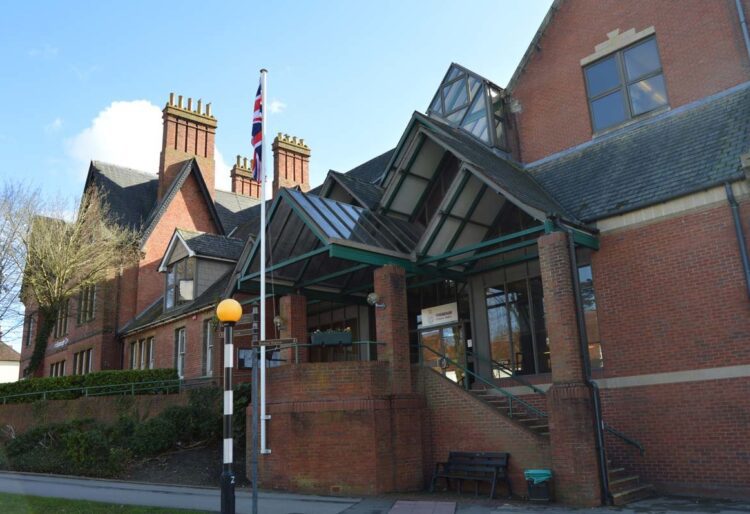‘Undeliverable’ – that’s the word on the lips of many Wokingham councillors to describe new housebuilding targets imposed on the council by central government.
The borough, often ranked as one of the most affluent in the country, must build 1,336 homes a year – a huge 75 per cent increase in existing targets.
It all comes as part of the government’s flagship scheme to build 1.5 million new homes in England over the next five years.
As well as new targets, the government has hinted at a huge overhaul of the existing planning system, which could see local authorities review their greenfield land. Funding has also been given by the government to convert existing brownfield sites, such as unused car parks or industrial spaces, into homes.
But along with new housing there has not been as strong a guarantee of supporting infrastructure for growing populations, such as GP surgeries, pharmacies and dentists, schools and more public transport.
At the same time, parties are in agreement that more social housing is ‘desperately’ needed for the borough.
So, how will Wokingham build so many new homes in coming years?
What’s it like to live in Wokingham?
Wokingham is one of the most affluent boroughs in the country and is consistently ranked as one of the happiest and healthiest places to live.
According to the council, there is an ‘oasis of choice’ for childcare and well performing schools in the borough, after being ranked as the best place for childcare by Ofsted this month.
This has long attracted young families to the borough, which has seen its population grow by 15 per cent in between the 2011 and 2021 census.
The number of people moving from nearby London has also ‘turbocharged’ in recent years post-pandemic, according to leader of Wokingham Borough Council, Stephen Conway.
This has driven up housing prices, with the average price of a home in the town at more than £500,000, according to Rightmove.
“The more expensive an area’s housing, the more homes it is required to build,” explains Councillor Conway.
He says that the government’s logic here is to increase affordability in areas that have many locked out of getting on the property ladder due to how expensive it is.
But Cllr Conway said this coming to fruition in Wokingham’s case is ‘highly unlikely’, because developers have ‘no interest’ in seeing prices fall.
His party, the Liberal Democrats, have argued that more social housing is ‘desperately’ needed for the borough, which cannot be delivered by the new targets.
The number of people on the social housing register has been rising, and the number of homeless people – albeit still very small – has also grown in recent years.
MP for Wokingham, Clive Jones agreed that Wokingham needs ‘genuinely affordable development’ and that the new planning rules ‘does not address the root problems facing communities such as Wokingham – a desperate lack of social housing’.
The council has also increased its requirement for affordable housing contributions from developers, now at 40 per cent.
What do parties in the chamber think?
The rate of housebuilding being asked from the council could ‘change Wokingham as we know it forever’, Conservative Councillor Charles Margetts warned in November.
He introduced a motion to full council following the release of provisional targets to urge colleagues to write to the government – arguing in practical terms, they could not be delivered.
On Thursday, November 21, councillor Margetts said: “Since I was elected in 2016, the number one issue our residents have raised with me has been the level of new housebuilding expected in the borough.
“Wokingham’s population increased by 15 per cent from 2012 to 2022. Based on my experience, residents are not opposed to new housing but are firmly against new developments occurring without the necessary infrastructure growth.”
In a rarer occurrence, the Liberal Democrat administration agreed with their opposition, and passed an amended motion through the council.
But the Labour Group in the chamber expressed ‘disappointment’ at the motion, arguing that housing was an ‘agonising worry’ for many in Wokingham.
Councillor Marie-Louise Weighill, member for Norreys, said: “I’m going to make the controversial suggestion that housing is good, actually – we should have more of it.
“We often hear about the threat of housing. Housing is presented very often as something that is imposed by an external force. But the character of the borough for many people is a constant and agonising worry.”
Fellow labour member Alex Freeney pointed to the 1,337 people on the social housing register in Wokingham, branding the motion as ‘completely tone deaf to the problems people in this borough are actually facing’.
What do other councils think?
Wokingham Borough Council is not alone in its concerns over the new targets.
Local councils told the government its plans to deliver the new homes was ‘unrealistic’ and ‘impossible to achieve’, following a Freedom of Information request from the BBC.
A vast majority of councils expressed worries over the targets during a consultation earlier this year – shared by Labour, Conservative and Liberal Democrat authorities.
Many, like Wokingham, said the algorithm used to calculate demand had not taken into account the strain on local infrastructure, land shortages and a lack of capacity in the planning system.
But many supported the principle of more housebuilding, recognising the housing crisis facing the country today.
Neighbouring Bracknell Forest Council, run by Labour, have so far embraced their government’s commitment to solving the housing crisis.
While West Berkshire, made up of more rural areas, has had targets shoot up to 1,070 per year.
The future
How new targets will be implemented, and how planning authorities will cope with this, is not yet known.
“We will continue to make the case that the government’s approach to market housing delivery in the Southeast is fundamentally flawed and needs to be changed,” Council Leader Stephen Conway said.
“The government should be bold and adopt a truly national approach to planning that encourages more investment and opportunity in those areas that really need it, rather than go for the easy and time-honoured option of cramming more market housing into the already overcrowded Southeast.”





































